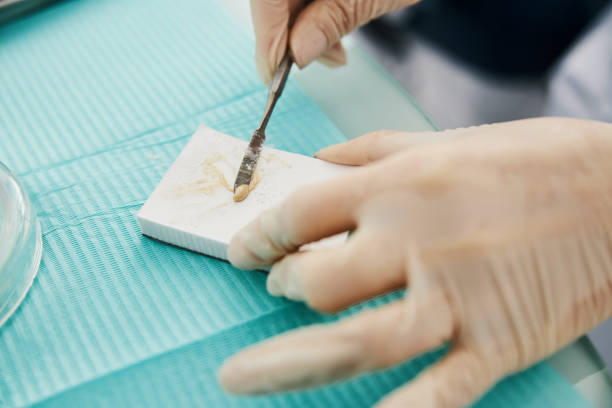Modern restorative dentistry relies heavily on the performance characteristics of luting agents that bond prosthetic devices to natural tooth structure, making cement selection one of the most critical decisions in achieving long-term treatment success. Professional suppliers like Dental Cement – Orien Dental understand that different clinical situations demand specific material properties, from high-strength permanent cementation to temporary applications requiring easy removal. The complexity of modern cement chemistry means that practitioners need reliable technical support and consistent product quality to deliver optimal patient outcomes.
Understanding Cement Classification Systems
Dental cements fall into several distinct categories based on their chemical composition and intended applications. Zinc phosphate cements represent the traditional gold standard, offering excellent compressive strength exceeding 100 MPa and proven long-term clinical performance spanning decades of successful use.
Glass ionomer cements provide unique advantages through fluoride release and chemical bonding to tooth structure, making them particularly valuable for pediatric applications and situations where caries prevention takes priority. Conventional glass ionomers achieve compressive strengths around 200 MPa, while resin-modified versions can exceed 250 MPa.
Resin-based cements offer superior esthetic properties and exceptional bond strengths, particularly when used with appropriate bonding agents. These materials achieve tensile bond strengths of 20-30 MPa to enamel and 15-25 MPa to dentin when proper technique is followed.
Polycarboxylate cements occupy a specialized niche, providing biocompatibility advantages and chemical adhesion to tooth structure while maintaining relatively easy removal when necessary. Their compressive strength typically ranges from 50-80 MPa, making them suitable for specific applications.
Clinical Application Considerations
Crown and bridge cementation requires careful consideration of retention requirements, esthetic demands, and long-term stability expectations. High-strength permanent cementation typically utilizes zinc phosphate or resin-based materials, depending on whether esthetic translucency matters for the specific restoration.
Temporary cementation applications demand materials that provide adequate retention during healing periods while allowing controlled removal without damaging underlying tooth structure. Zinc oxide eugenol-based materials excel in these applications, offering compressive strengths around 35 MPa with easy removal characteristics.
Orthodontic applications require specialized considerations including fluoride release for caries prevention, appropriate working time for multiple bracket placement, and sufficient bond strength to withstand orthodontic forces. Glass ionomer cements often provide optimal performance for these applications.
Endodontic sealing applications utilize specialized formulations designed for root canal environments, including materials that set in the presence of moisture and provide antimicrobial properties. These applications require different performance characteristics than traditional luting applications.
Material Properties and Performance Metrics
Compressive strength measurements provide important baseline information, but clinical performance depends on multiple factors including tensile strength, bond durability, and resistance to oral fluids. Laboratory testing may not fully predict clinical behavior in the complex oral environment.
Setting time characteristics significantly impact clinical workflow and technique sensitivity. Fast-setting materials reduce chair time but may compromise working time for complex procedures, while extended working times may increase risk of contamination or patient movement.
Solubility resistance varies dramatically between cement types, with some materials showing measurable dissolution in oral fluids over time. This characteristic becomes particularly important for subgingival margins where cement integrity affects periodontal health.
Film thickness requirements ensure proper seating of restorations without compromising marginal adaptation. Most dental cements must achieve film thickness below 25 micrometers to meet ISO standards, though clinical requirements may be more stringent.
Quality Control and Batch Consistency
Manufacturing quality control protocols ensure consistent performance characteristics between production batches, though some variation is inevitable in complex chemical formulations. Professional suppliers typically provide certificates of analysis documenting key performance parameters for each batch.
Storage requirements significantly affect cement performance and shelf life. Temperature fluctuations can alter setting characteristics, while humidity exposure may compromise powder components in two-component systems. Proper storage conditions become essential for maintaining product integrity.
Expiration date management requires understanding how different cement types degrade over time. Some materials maintain performance well beyond stated expiration dates when properly stored, while others may experience significant property changes that compromise clinical outcomes.
Technique Sensitivity and Clinical Variables
Mixing protocols greatly influence final material properties, with hand-mixing and mechanical mixing producing different results even with identical materials. Consistent mixing techniques help ensure predictable clinical performance across different operators and clinical situations.
Contamination control becomes particularly critical during cement placement, as saliva or blood contamination can severely compromise bond strength and long-term stability. Isolation techniques and contamination protocols should match material requirements.
Temperature sensitivity affects both setting characteristics and final properties of many dental cements. Oral temperature variations and irrigation techniques can influence setting behavior and ultimate performance characteristics.


